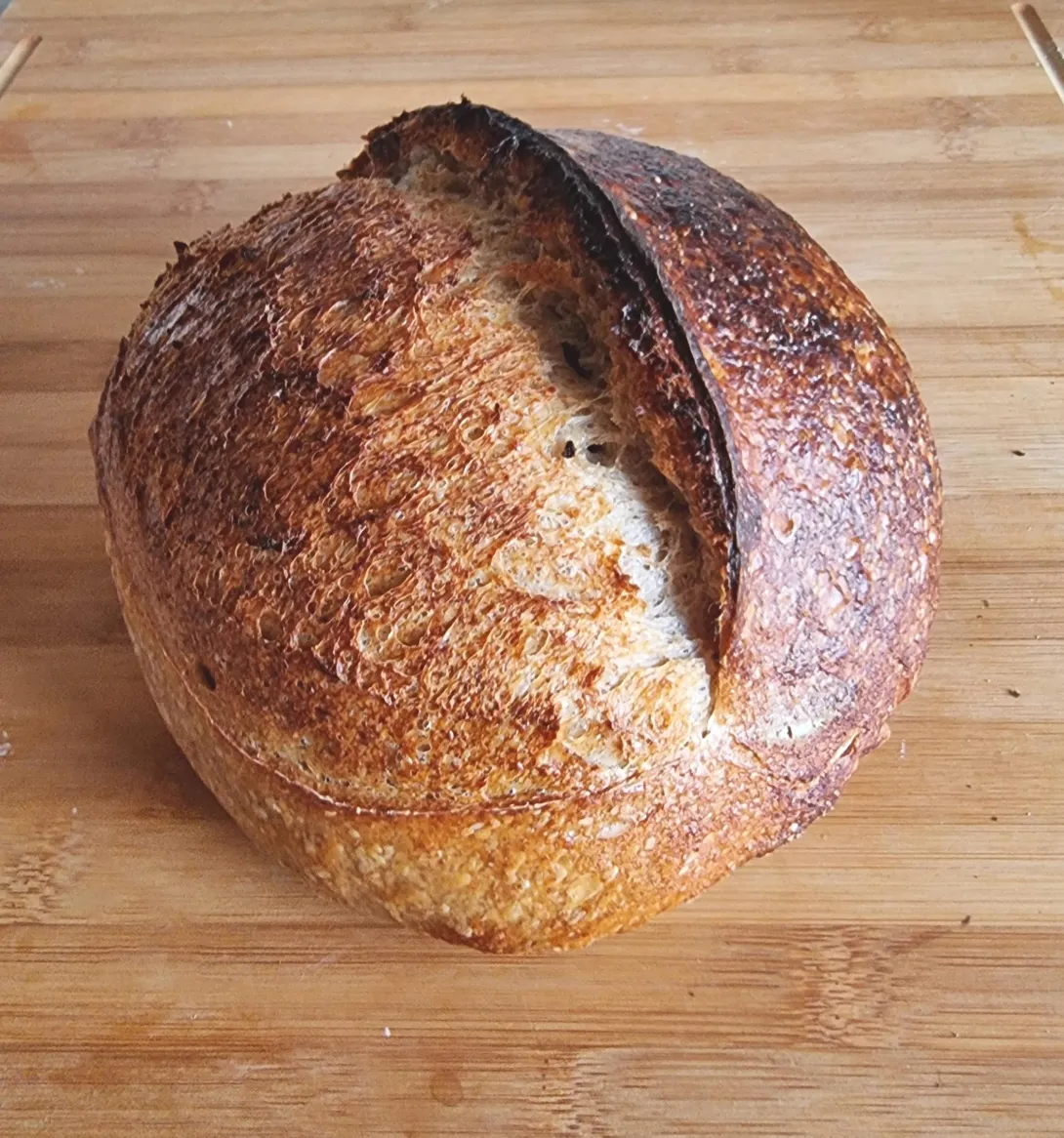
The blog title is actually short for "Middlings Levain Bread", but it's a bit of a mouthful - read on....
I'm always on the lookout for ways to add more wholegrain to my loaves without reducing loaf volume and crumb tenderness too much. I have tried sift and scald but never been too happy with the result - the scald seems to make the bran tougher to me. I've also tried sifting and reducing the particle size of the bran fraction the bran fraction in a spice grinder to reduce particle size. This is quite effective, but rather messy.
And then there is the bran ferment/levain idea, which has been used by several TFL members in the past. This is the method I focussed on in this bake.
In this bake I decided to have 25% freshly milled wholegrain content - 15% heritage wheat + 7.5% spelt + 2.5% rye. I separated the coarse bran in a coarse kitchen sieve and gave it an overnight salted cold soak. I kept this bran separate because I didn't want the levain to get too acidic; also the bran can be added to the dough later on low speed, after gluten development, so it doesn't cut the gluten strands.
Then I sifted what was left through a #50 sieve. The pass-through went into the main dough flour and the retentate (the middlings) went into the levain.
I read a scientific paper on bran pretreatment by fermentation and it said they work best with added alpha amylase and xylanase to chop up the xylans in the bran. The alpha amylase I could get from diastatic malt flour, but the xylanase is not something you can buy too easily. Fortunately I found that a commodity bread flour in the UK called Allinsons contains added hemicellulase. Xylanase is part of the hemicellulase family, so this was as close as I could easily get. So I added a good amount of this flour to the levain as well.
The first couple of times I tried this method I used 30% levain, but fermentation was just too fast and the retarded loaves were overproofed - the freshly milled middlings must be the cause. So this time I cut the levain down to 20%
Autolyse was 30 minutes and bulk was 3hrs 15m to a 33% rise. More details can be found in my attached bread log. I called it Gerard Middlings Loaves because it has the same ratio of wholegrain wheat, spelt and rye that Gerard Rubaud used.
This time loft, ears and crumb were good - no overproofing. Loaf height for my standard batard was 96mm, which I consider to be very good for 25% wholegrain. Also the method seems to give a soft crumb that stays moist and keeps well.
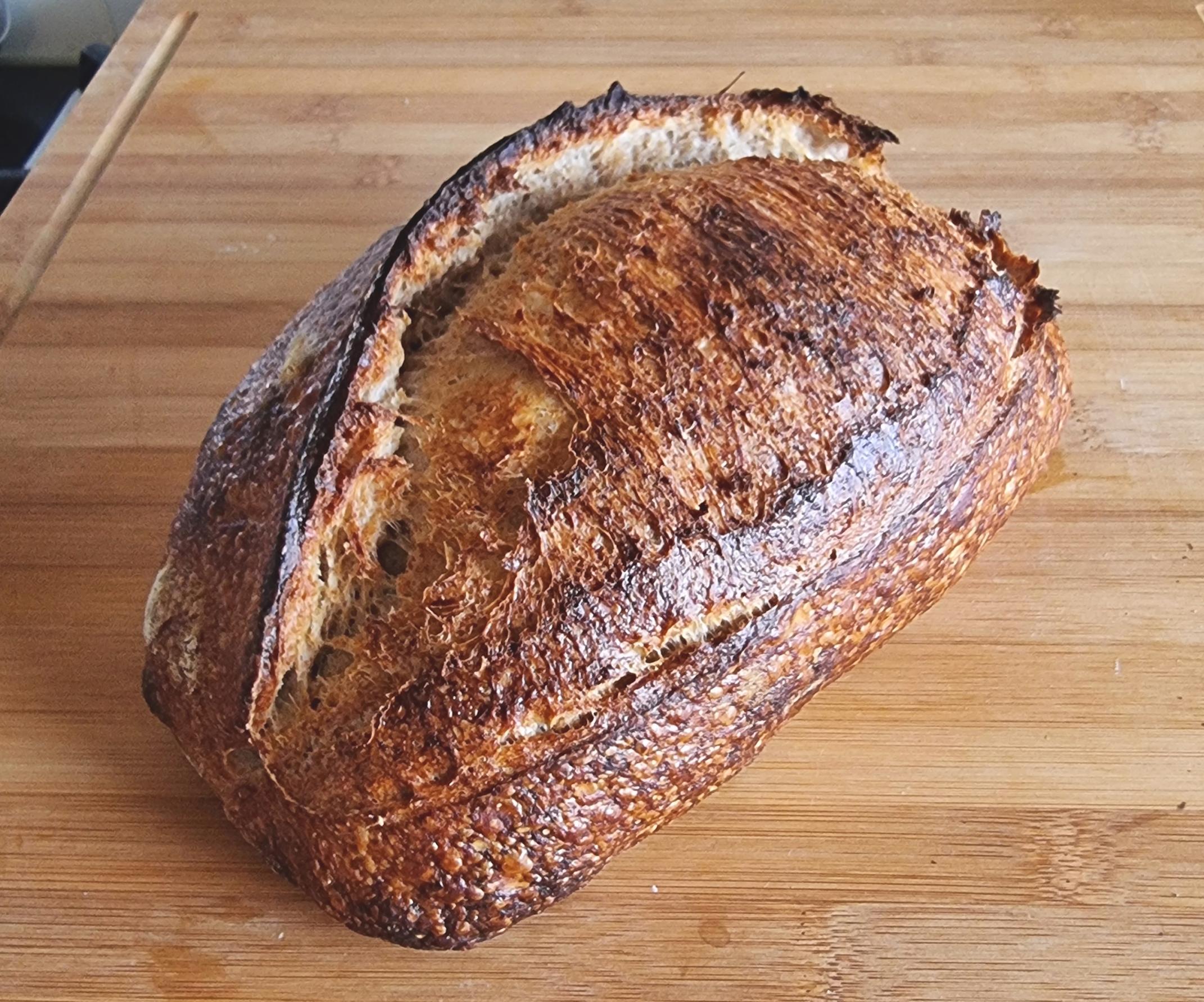
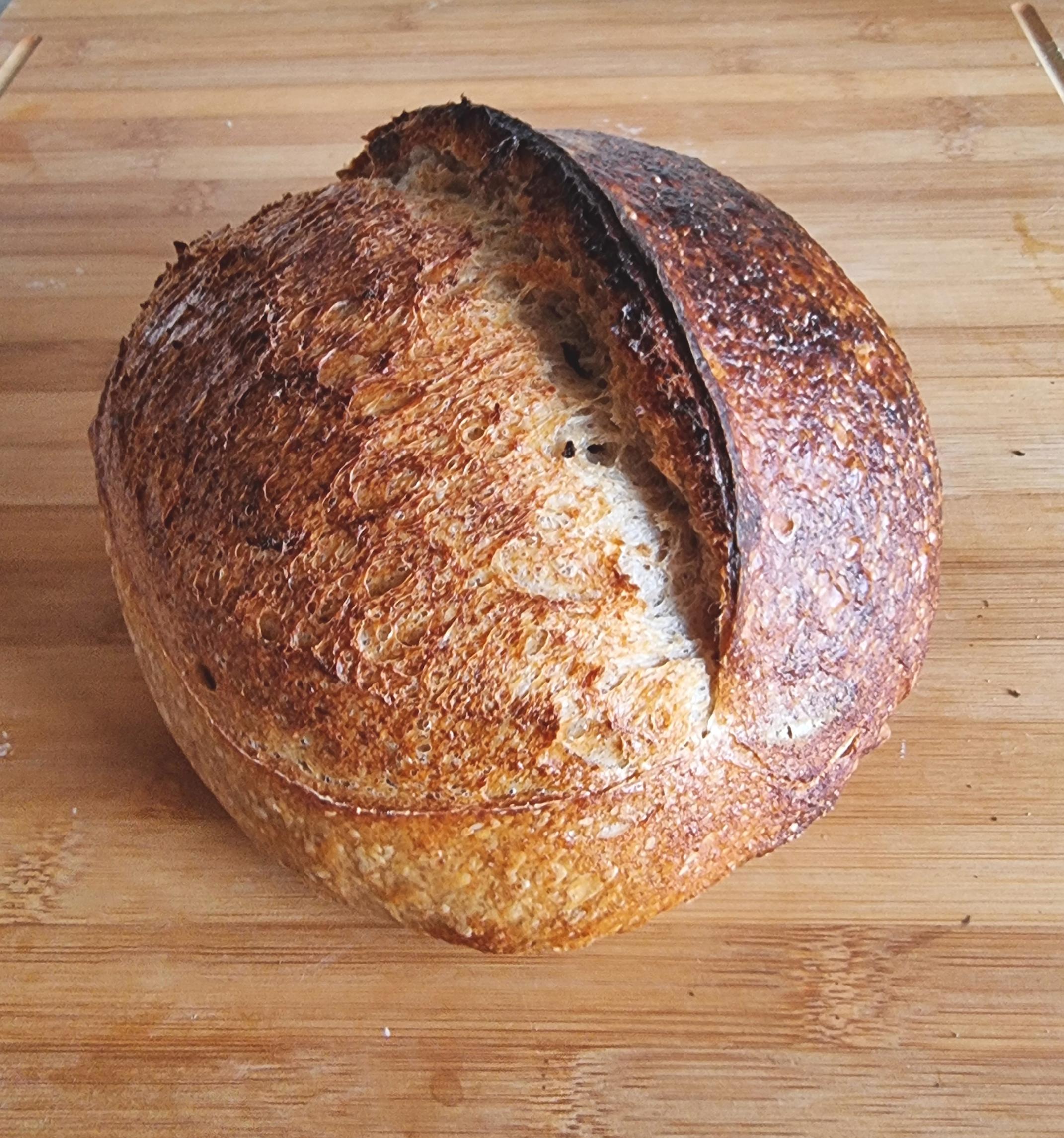
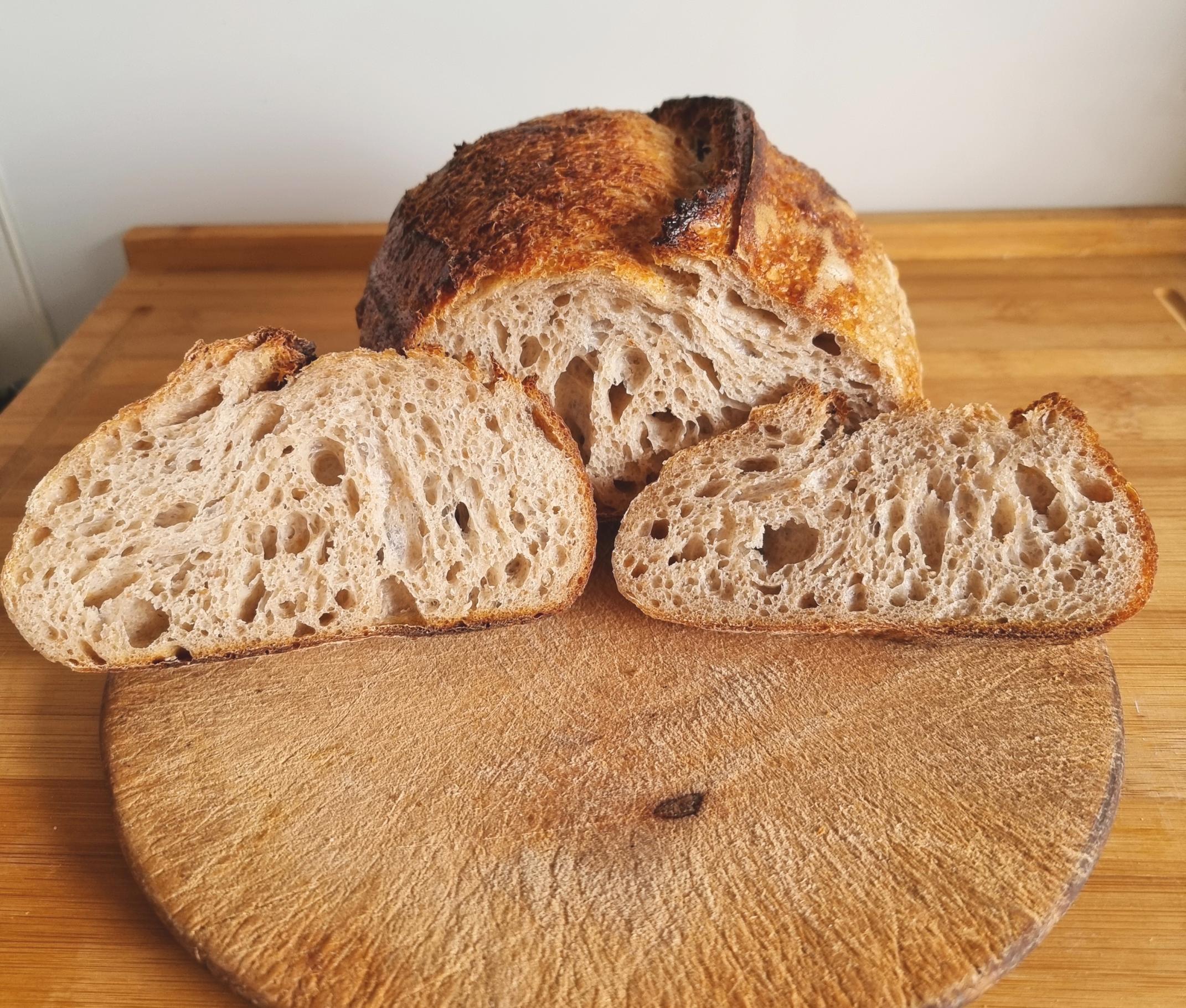
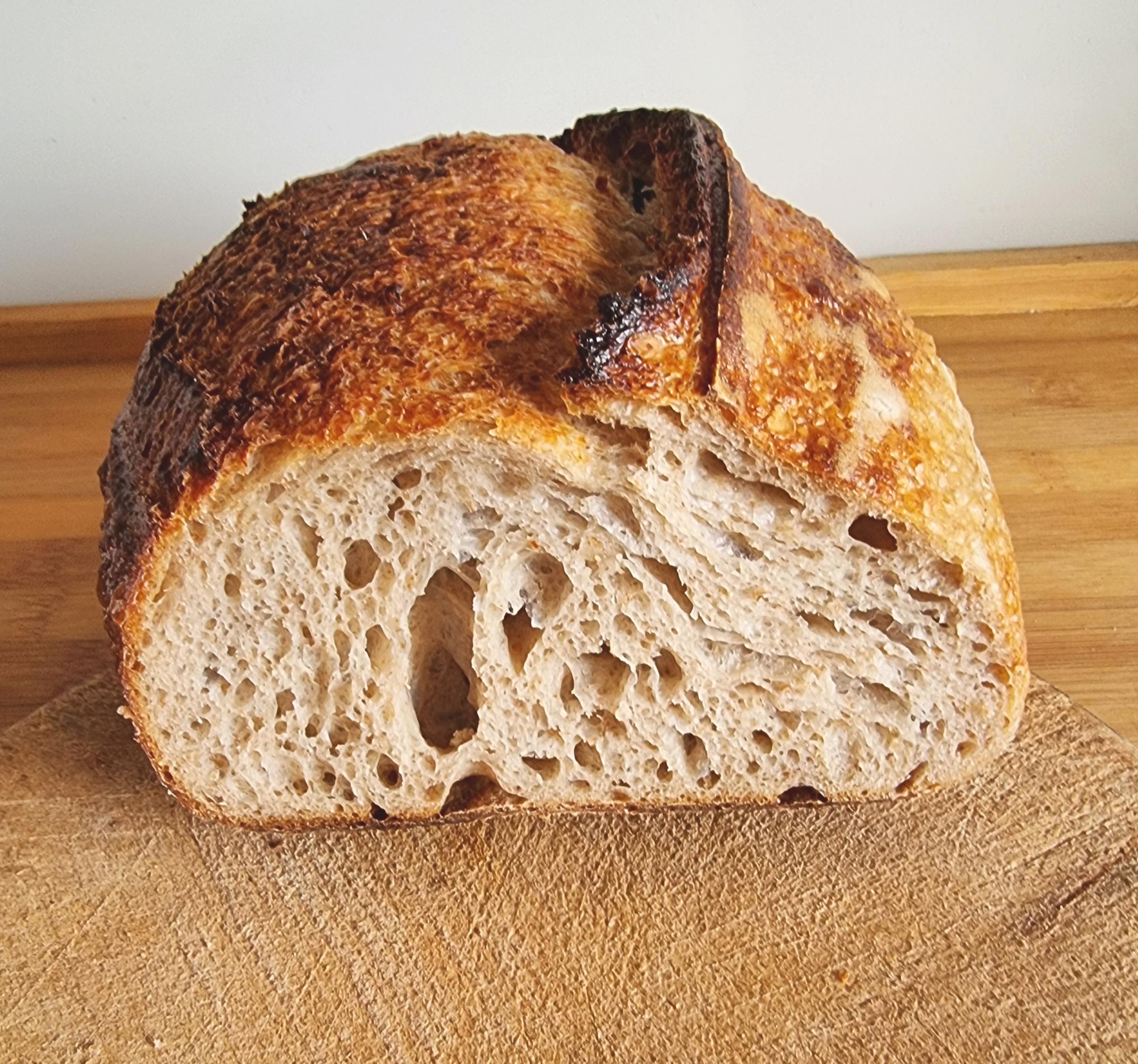
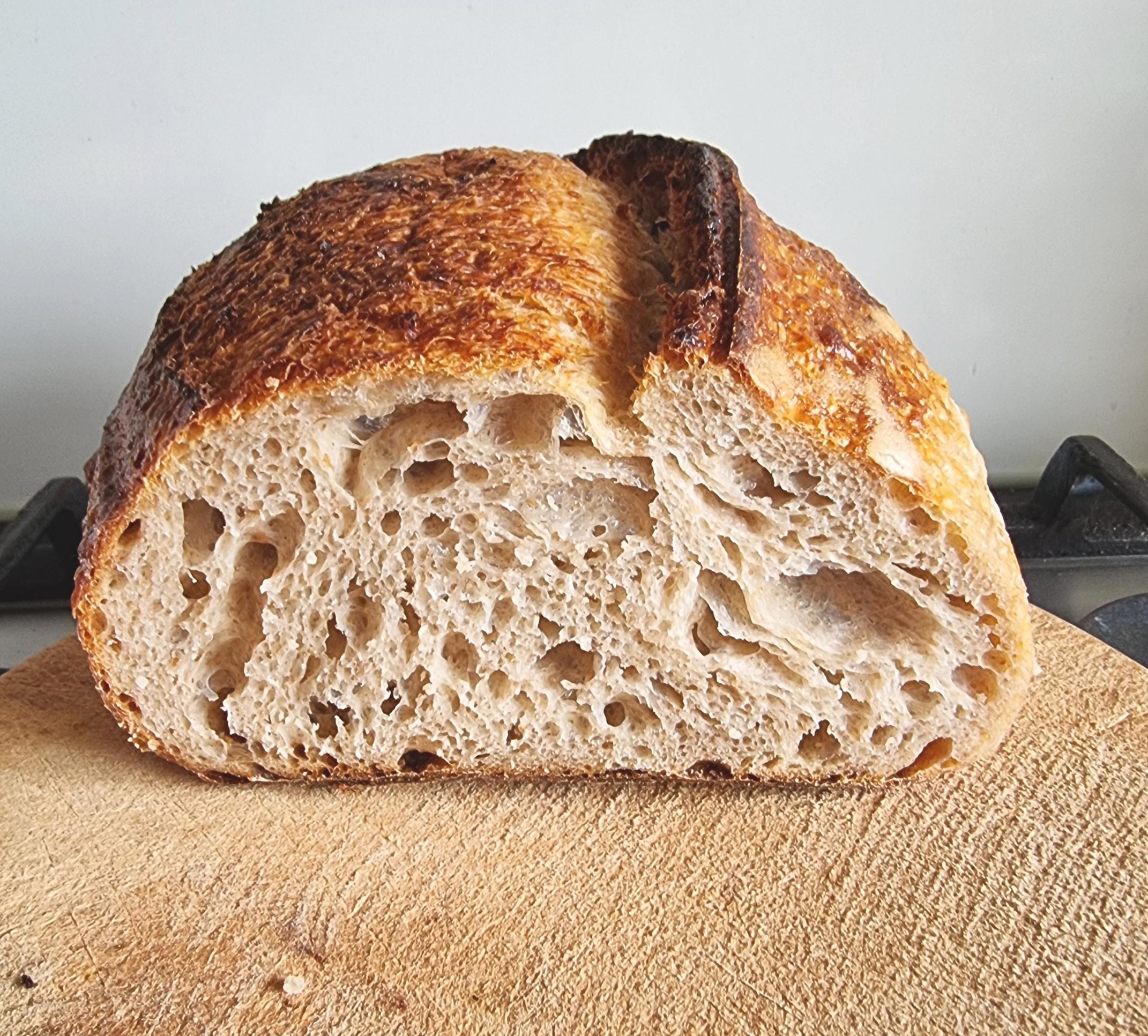
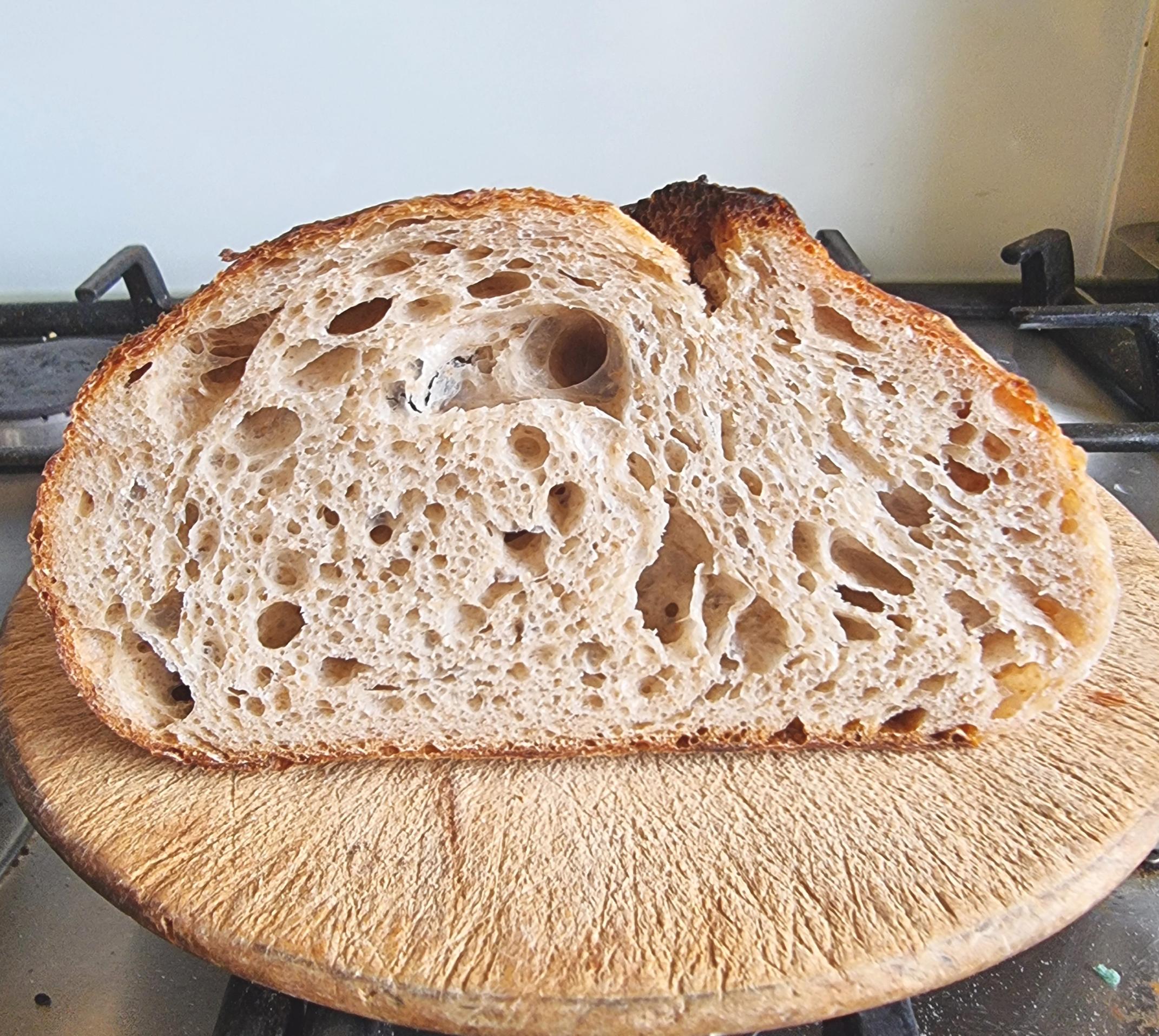

Lance
- albacore's Blog
- Log in or register to post comments
Very interesting experiment. I used to mill and sift with a #30 drum sieve first and then re-mill at the finest setting and sift with a #40. I have never felt the need to torture myself using my #50 sieve. I don’t find it adds anything to the final dough. Now I find I only need to sift once with the #30 and then re-mill. I only sift twice for durum which really needs to be lighter and finer.
I usually add some bran from previous milling to the starter. I am ok with forgoing the soaking and adding the bran later technique as I’m not that concerned about having every last piece of bran in my loaves. I usually have 73-80% FMF in my loaves so they are plenty healthy and tasty.
Anyway, your bake is awesome.
Ian
Wow! I don't know what more one could ask for, between the expansion, the ear, the sheen, and the crumb. Great job!
TomP
Couldn't agree more! Nothing to add! Wonderful!
Thank you all for your comments.
Ian, I have tried remilling in my Mockmill, but find it rather dusty and messy. Also I do wonder about more starch damage and heat.
What I did try recently (not on this bake) was to put the grain in the freezer overnight before milling. Certainly the flour came out of the mill a lot cooler.
Lance
Lance. Beautifully crafted with full marks on all aspects. I commend you for the meticulous effort to include all the bran. I am leary of remilling in my Mockmill because the manual says not to do it. I sift mine twice and remove about 7% with a #40 sieve but it goes in the compost pile. I try to get fiber from fruit and veggies instead.
Don
Yes, good point about remilling; the manual says mill dry grain only, so technically not flour, but that's a subject for another post I reckon.
I might make the "Middlings Bake" my norm for a while, but it is limited to a max whole grain content of about 30% - otherwise the levain will have too much middlings for the amount of active flour in the levain.
Lance
Beautiful colour Lance, I'd definitely mark this one as something to come back to.
Interesting thoughts on fermenting the bran, lots of food for thought.
-Jon
The wide bloom, the bran hued crust and crumb, and an airy crumb to boot!
Great stuff!
Michael
Yes, I'm certainly happy with the results that this novel method produces. There's a bit of extra work, but not too much.
The trickiest part was working out all the percentages, hydrations, etc. As soon as you split a flour into three streams to use in different places, it gets complex!
Lance
Lovely loaf Lance and great technique experimentation. Made we want to try it out as soon as I read it. Will check the Alison's flours at my local supermarket for the Xylanase substitute. My main sticking point is how the separate out the Middlings as I only have a couple of kitchen sives.
I have used the overnight soak of the wholemeal flour with salt to very good effect with high wholemeal content bread, so I think it goes quite a lot of the way to giving good crumb and good oven rise. Wondering how much more the Middlings fermentation adds. Probably also a helps with the crunch and colour of the crust.
Looking at your bake notes, your levaine is 100% hydration in the first build and 60% the the second? Wasn't up to doing the maths this morning!
One more question. Xylanase breaks down the structure of the bran. Does that mean that it wouldn't count as bran in the composition of the bread anymore? Good for making a nice loaf but maybe at the expense of the full health benefits of the untreated full bran content?
Still, definitely going to try the technique!
Regarding sieves, you might get away with a kitchen sieve, if the mesh is fine enough. I do find a couple of test sieves to be very useful if you have the space and funds (they're not too expensive). The usual sources - Ebay, Aliexpress or Amazon. You can get by with 8" ones for a few hundred grams, though I recently bought a 10" one to do things a bit quicker.
Well spotted on the levain front. I just found that the first levain build at 100% got things moving faster, then reverting to 60% for the advantages of a stiff levain - less acidity, more gluten protection and less critical peaking.
You make an interesting point about the use of xylanase; inevitably I had to resort to ChatGPT to get a quick answer. Full chat here and a short summary:
"Summary:
Using xylanase doesn’t remove the “healthy” properties of bran — it changes them. You may get less insoluble bulking fiber but more soluble/prebiotic oligosaccharides and better bioavailability of phenolics. In fact, bread with xylanase-treated bran is often considered more functional from a gut health perspective, while also being more palatable."
So, some changes, but it's not all bad!
Lance
Soluble fibre might actually be better, for more than gut health, so great to know.
Were in the East Midlands for the weekend with the family for the weekend staying with some friends and visited a working 18C windmill that still makes flour, so got some packs of both white and wholemeal bread flours made at the mill. Will use the wholemeal for my first try of your method.
Finally found some Allinsons strong white and gave the Middlings technique a go. This is the link to my blog post about it.